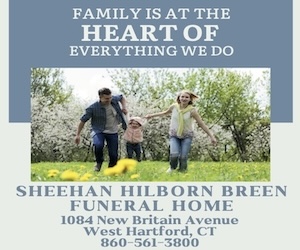Former Springfield, Mass. Federation head and his wife author a book about intermarriage and conversion
By Stacey Dresner
 Four years ago, members of the Springfield, Mass. Jewish community said goodbye to Harold Berman, executive director of the Jewish Federation of Western Massachusetts, when he, his wife, Gayle, and their two children made aliyah to Israel.
Four years ago, members of the Springfield, Mass. Jewish community said goodbye to Harold Berman, executive director of the Jewish Federation of Western Massachusetts, when he, his wife, Gayle, and their two children made aliyah to Israel.
Now the Bermans have written “Doublelife: One Family, Two Faiths and a Journey of Hope,” a book detailing the journey they made from being an interfaith couple to a fully involved observant Jewish couple.
When Harold and Gayle met, he was “very far removed from Jewish life,” and Gayle was a minister of music in a Texas mega-church. “Doublelife” shares the twists and turns in the couple’s journey to becoming a Jewish family – part of which took place in Springfield during Harold’s stint as Federation director.
Harold Berman has more than 15 years experience as a non-profit leader and has served in senior positions of several organizations in the U.S., and now in Israel. He is the author of “Jewish Adoption – Unique Issues, Practical Solutions” (Jewish Lights Publishing), and his writing has appeared in the Boston Globe, New York Jewish Week, Jerusalem Post and online. He earned his law degree from Boston College. Before that, he was a musician, earning his Bachelor’s degree from the New England Conservatory of Music and serving as principal clarinetist of the U.S. Air Force Band of the West in San Antonio, Tex.
Gayle Berman is an internationally acclaimed singer, and has performed and conducted throughout North America, Europe and the Middle East. While in Springfield, she founded the Western Massachusetts Jewish Women’s Chorus. In Israel, she teaches privately, and has served as the Music Director of Emunah v’Omanut and the Raise Your Spirits women’s performing ensemble.
The Bermans, who live in Israel with their two children, Micah and Ilana, are also launching J-Journey, a website to help intermarried families.
The Bermans recently shared their story with the Jewish Ledger.
Q: The book consists of letters written between the two of you, from the beginning of your courtship to your marriage. Are these real letters that you kept, or was this just your way of telling the story?
Gayle: We spent a lot of time thinking about how best to engage the reader and make our story as accessible as possible. We found that the standard dual memoir format often has a “he said, she said” quality that is very stilted and cumbersome. As we searched for an alternative, we realized that on several occasions throughout our marriage, we had written letters to each other. So we decided to write our story as a series of letters. Every letter in the book is based on an actual letter or a real conversation that took place between us. Most books about intermarriage, or even about conversion, discuss how to celebrate holidays, how to negotiate certain issues and the like. Instead of yet another “how to” book that deals somewhat superficially with the more obvious issues, we’ve tried to offer something that delves deeper. The letter format allows the reader to literally eavesdrop on the conversation as it unfolds, giving the reader a real-life and real-time sense of the inner dynamics of an interfaith couple and what happens between them when the nature of their spiritual life begins to change.
Q: What made you want to write this book and share your story with others?
Gayle: We have not found any other books that tell this narrative, but we have met many couples who have traveled a similar path. We would like for our story to help others develop the courage to consider exploring their own path.
Harold: We’ve had a rather unique journey to becoming a Jewish family, and many people urged us to write a book. When people like bestselling author Daniel Gordis also urged us to write a book (and he has now written a review), we started to take it seriously.
But we had no interest in just writing a book about ourselves. There needed to be a larger purpose. When surprisingly, we found no other book out there chronicling the journey of an intermarried couple becoming a Jewish family, we felt compelled to share our story. Even as the Jewish community grapples very publicly with intermarriage, these families who have transformed from intermarried to Jewish, who have immersed themselves in Judaism, who are our greatest intermarriage success stories, remain largely under the radar. Instead of remaining untold, these success stories could be inspiring our Jewish community, helping to build confidence and offer a powerful vision of what Jewish life could be. We hope our book will make a contribution in that direction.
The majority of the bestselling Jewish memoirs are Holocaust memoirs. The few that chronicle a post-Holocaust story mostly tell of disenchantment with Judaism. This is astounding. Have we so few inspirational stories, so few positive stories to tell about Jewish life in the nearly 70 years since the Holocaust? We feel it’s time for a different Jewish narrative, one that tells of the beauty of Judaism, the power of spiritual transformation, and the wonder of being part of the Jewish people.
Q: When you met, Harold was a non-observant Jew raised on the East Coast and Gayle was a Christian raised on a farm in the Midwest. Harold, in one letter fairly early on you say, “I suppose we ought to touch on the ‘religion thing. Not that I think it matters. I’m Jewish. You’re Christian. But I just don’t see this as much of an issue.” After the journey you both made over the years, what do you think of that statement now?
Harold: I was 24 when we got married, and that statement accurately reflects how I felt at the time. Obviously, I’m in a much different place now. There is, of course, an underlying humanity that connects us all, and we sometimes don’t do enough to honor our common bonds. However, discovering common ground with a friend from a different background is very different from finding common ground with your life partner. In “Doublelife,” Gayle describes a woman who was active in the church where she worked when we met. Her name was Cafi Cohen – she was Christian and her husband was Jewish. Even though they had a great marriage, it was very hard for Cafi that she and her husband couldn’t fully share in something that was so central to her, that gave her life meaning.
It is, of course, possible for a Jew and a Christian to be married, and to be happily married. Gayle and I are proof of that. We were a very happily married interfaith couple for many years. But interfaith marriage is not without its challenges, which can sometimes be difficult and sometimes even insurmountable. It becomes even harder when children enter the picture, and we’ve seen many interfaith couples over the years who insist that their choices about their children’s religious upbringing are for the good of the children but really have more to do with what each parent needs.
Although I know that some disagree, it is far better for a child to be rooted in one faith than in two, and everything I’ve observed over the years has confirmed that view. Being rooted in one faith is not only about religious practices in the home. It is – and this is something the Jewish community largely overlooks – very much rooted in how the child identifies religiously, which is much more influenced by how the parents identify religiously. When we lived in Boston, Gayle had a voice student, a very bright young woman studying at Harvard. She came from an interfaith home, and one day said wistfully to Gayle, “It would just be nice to know who I am.”
Beyond the issue of children, interfaith couples often experience what Rachel Cowan has called “time bombs” – events that alter one or both spouses’ outlook on religion and threaten the underlying assumptions on which their marriage is based. It’s hard enough when two Jews are married to each other and one begins to become more observant than the other. That issue is magnified many times over when a husband and wife are of different faiths.
Over the years, we’ve spoken with interfaith families of all types. In virtually every case, no matter how strong the marriage, if the conversation goes on long enough, we hear about the difficulties, the challenges, and sometimes even the sadness over a gap that remains even while it is being bridged. As I mention in the book, when I was the Federation director in Western Massachusetts, more than a few people walked into my office, closed the door, and unloaded about their challenges – interfaith couples, their parents and grandparents. In most cases, the challenges stemmed from changes that had taken place since the marriage began.
So, if I were speaking today with that 24-year old version of myself who said he doesn’t think “this is much of an issue,” I would respectfully but firmly disagree. I think what comes across in “Doublelife” is that, even though we had a wonderful interfaith relationship, it was not without its challenges – and there is very clearly an added dimension and an even stronger bond now that we are a Jewish family.
Q: Gayle, you made a fairly long journey to Judaism – about 13 years after the two of you met and married. What ultimately made you decide to convert?
Gayle: I spent much of my adult life, until after my decision to convert, as a minister of music in a Texas mega-church, as an organist and choir director, and as a church soprano soloist. It was only after many years that I realized that I had been gradually removing any reference to Jesus in the music I chose because underneath I felt uncomfortable with it. I also came to realize that the fulfillment I received from my church work was – yes, helping other people have a spiritual experience – but primarily because I enjoyed the music-making, apart from the Christian setting in which it was taking place. I enjoyed performing music written by major composers on some really amazing pipe organs. I loved being able to conduct a wide variety of beautiful music performed with choir and instruments. And as a singer, I always savored a chance to sing a solo. But none of this had anything to do with Christianity, and my performing needs could be met by the secular world.
Along with my own spiritual shift, as I watched our son, Micah, literally jump into Judaism with his whole heart, I found myself loving every moment of seeing his innate pull toward Judaism and became convinced that Judaism was the faith for our family. And since most of Jewish life is centered around the family, and since Harold was being drawn to Jewish observance like metal to a magnet, and since faith in One God without the need for a mediator was making more and more sense to me, it became obvious to me that I should explore becoming a Jew myself.
Q: You talk about your life in Springfield contribute to your spiritual journey?
Gayle: The Jewish community of Springfield could not have been more warm and welcoming to us. Everyone at the Kodimoh synagogue helped us to feel like we were part of one big family. We both obviously had a lot to learn at that point. Our fellow congregants, and especially Rabbi Fred and Tova Hyman, helped us learn and grow Jewishly to an immense degree, and in a way that never caused us to feel embarrassed or inadequate when we didn’t know something. We were largely shown by example, without any judgment whatsoever – how to say the prayers and how to live our lives as observant Jews.
Harold: Our time in Springfield was a critical part of our journey, and Western Massachusetts figures prominently in the second half of the book. We entitled the book “Doublelife” for a reason. One of the themes throughout is that our journey contained many secrets – secrets we initially didn’t understand about ourselves, and secrets we didn’t reveal to the outside world at various times. Our four years in Springfield contained not a few secrets. For example, when we moved to Springfield, Gayle was still in the process of converting and so we were still technically intermarried. Since communities generally expect their Federation directors, as community leaders, to be in-married, and since we were very much “in process,” only four people in the community knew the real situation.This “inside/outside” dynamic continued for at least two years of our stay in Springfield. In the book, we discuss the many interesting, sometimes awkward and sometimes humorous incidents that came about as a result. It was in Springfield that we made the transition from being an intermarried family to becoming an Orthodox Jewish family. We will always be grateful to the Springfield Jewish community for providing just the right environment that made this possible.
I think that in reading our book, people will not only discover surprising things about us that they may not have suspected if they knew us when we lived in Western Massachusetts. For Jewish couples, it is our hope that the book will inspire them to take a fresh look at Judaism. For intermarried couples, we hope that, whatever decisions each couple makes about their own Jewish practice, in reading our story they will be inspired by what Jewish life can be. The book is also about overcoming obstacles and the power of persistence. So we’ve tried to write it in such a way that it will speak not only to Jews, but to anyone who has taken or is in the midst of a spiritual journey.
Q: What is J-Journey and did your own experience inspire you to form this organization?
Harold: As we went down the path to becoming a Jewish family, there were many times we could have benefitted greatly from speaking with others who had already traveled the same path. Who better to mentor, guide and support these couples than someone who had stood in their shoes and is now standing where they want to go – an observant Jewish family that was once intermarried. So we are now assembling a network of peer mentors who will be available to offer guidance and support to intermarried families at various stages of this process. J-Journey is not meant to fulfill the role of a rabbi, but rather to complement it. Nor it is meant to encourage people to convert, but rather to provide support to those intermarried families who are interested in exploring this path.
We are launching J-Journey with a web site (www.j-journey.org), which will be up and running by the end of November. On the site, people will be able to ask questions of those who already have been through the process, sign up to request a peer mentor, and ask questions of an Orthodox rabbi who has counseled literally hundreds of converts.
They will also be able to access additional resources in print and on the web, and become part of a community of other families who are on the same path. As J-Journey grows, future plans include a fully organized peer mentor network with regional chapters, retreats and even Israel trips for intermarried families in the process of becoming Jewish.
The idea for J-Journey was borne out of my work in Springfield. While there, I had multiple conversations about the concept with Harold Grinspoon and Rabbi Yitz Greenberg, both of whose insights, probing questions and encouragement helped me refine the idea and take it to a higher level.
Comments? Email staceyd@jewishledger.com
Ledger readers can visit www.doublelifejourney.com for a discount coupon to purchase Doublelife on Amazon.com








 Southern New England Jewish Ledger
Southern New England Jewish Ledger









